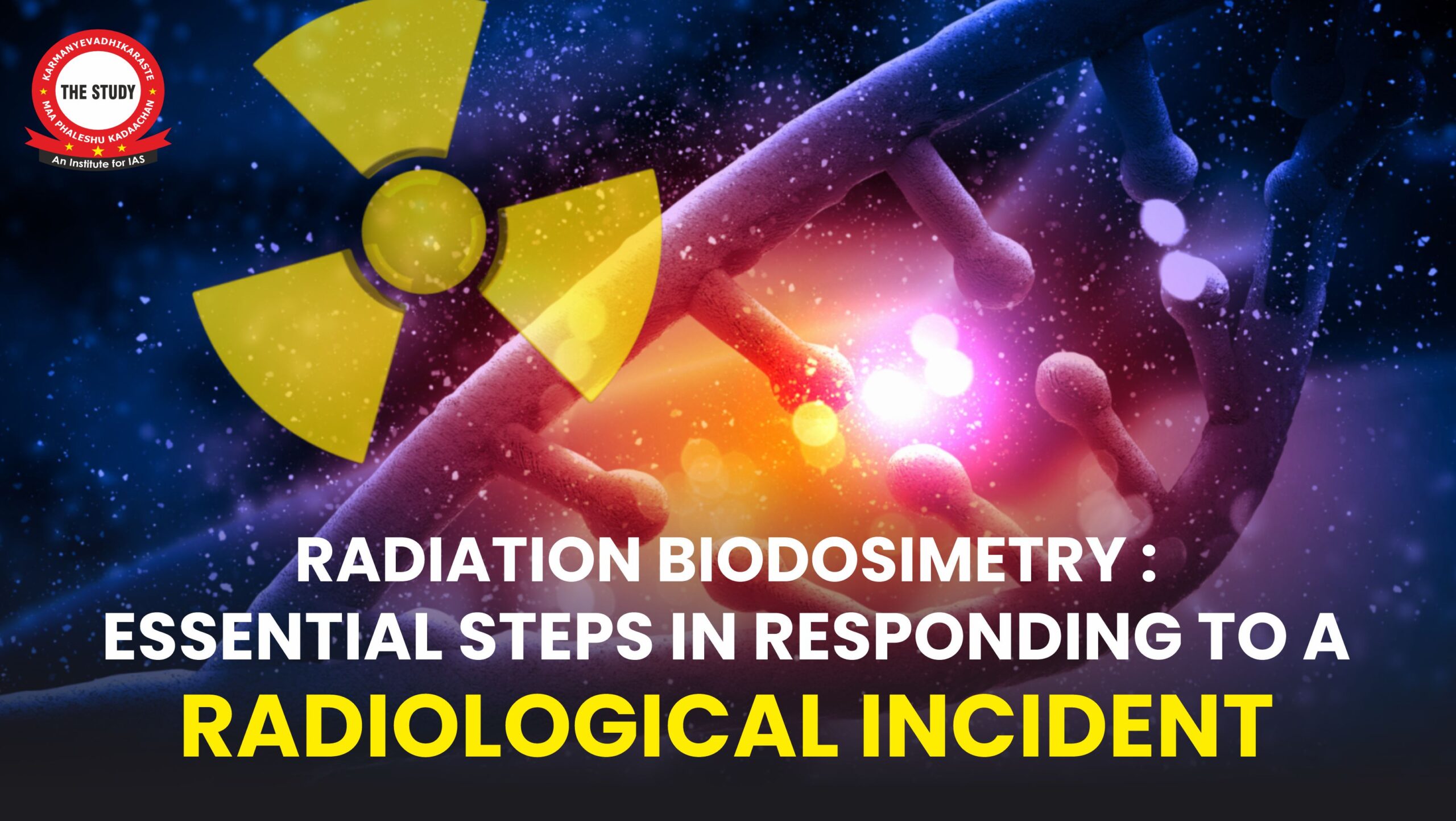Font size:
Print
Radiation Biodosimetry: Essential steps in responding to a Radiological Incident
Context:
The Columbia University team is striving to shorten the assay time on a High Throughput Screening (HTS) platform to less than 4 hours, recognizing the critical importance of promptly reporting radiation doses to enhance the effectiveness of treatments.
More on news:
- Drugs approved for radiation sickness are most beneficial when given shortly after exposure, underscoring the need for rapid dose assessment.
- Rapid assessment of radiation doses is necessary to address the needs of potentially thousands of individuals within a few days post-event.
- Automated biodosimetry facilitates rapid assessment of radiation exposure post-event. Supports tiered triage for immediate treatment decisions and long-term health monitoring.
Biodosimetry Definition and Purpose:
- It is the method of determining radiation exposure levels based on changes in biological indicators such as blood, urine, or hair samples.
- Particularly useful when personal radiation monitoring devices are unavailable during a radiological event.
What is Assay?
Gold Standard Biodosimetry Assays:
- Dicentric Chromosome Assay (DCA): provides results in 2-3 days.
- Measures chromosome aberrations in white blood cells.
- Requires cell culturing and microscopy to count dicentric chromosomes.
- Cytokinesis Block Micronucleus Assay (CBMN): results in approx 3 days by detecting micronuclei formation during incomplete cell division.
- Requires cell culturing, yielding results in approximately 3 days.
- Gamma-H2AX Assay: yielding results within 6-8 hours.
- Detects phosphorylation of histone proteins indicating radiation exposure. Differentiates exposure levels without cell culturing.
Enhancing Biodosimetry Throughput:
- Traditional lab networks and automated systems like RABiT increase sample processing capacity.
- High Throughput Screening (HTS) platforms allow rapid analysis of thousands of samples per day.
|
Accelerating Biodosimetry and Logistical Considerations in Emergency Response:
|





